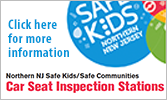Be On Guard for In-Home Drowning Dangers
Home drowning prevention tips
Cooler weather in most of the country means swimming pools have closed for the season, but parents and caregivers should know that other drowning dangers still exist in and around the home.
The U.S. Consumer Product Safety Commission (CPSC) is warning that children need to be supervised around the home and protected from these potentially hidden drowning hazards. Parents of young children can never let their guard down when it comes to water. They need to be aware that bathtubs, buckets, and other containers in and around the home pose drowning hazards all year long.”
Though an average of about 280 children younger than 5 years old drown in swimming pools each year, an average of about 150 additional children also drown at home in bathtubs, hot tubs and spas, buckets, toilets, trash cans, landscape or fish ponds and decorative fountains. After pools, more children drown in bathtubs than in any other product in and around the home. For 2002 (the most recent year of complete data), CPSC has reports of 69 children younger than 5 who drowned in bathtubs. Most bathtub drowning cases involved a child left unattended in the tub. In at least 27 of the 69 incidents, another child was also in the tub.
HERE ARE SOME MORE HOME DROWNING PREVENTION TIPS:
- Young children can drown in even small amounts of water. Never leave young children alone near any water.
- Always keep a young child within arm’s reach in a bathtub. Never leave to answer the phone, answer the door, get a towel or for any other reason. If you must leave, take the child with you.
- Don’t leave a baby or toddler in a bathtub under the care of another young child.
- A baby bath seat is never a substitute for supervision. A bath seat is a bathing aid, not a safety device. Babies can slip or climb out of bath seats and drown.
- Keep toilet lids down to prevent access to water. Consider using toilet clips to stop young children from opening the lids.
- Consider keeping children out of bathrooms by using bathroom door latches that are out of reach of young children.
- Never leave a bucket containing even a small amount of liquid unattended. After using a bucket, always empty and store it where young children cannot reach it. Buckets left outside can collect rainwater and are a hazard. Toddlers can fall headfirst into 4- and 5-gallon buckets and drown.
- To prevent children from gaining access to spas or hot tubs when not in use, always secure safety covers and barriers. Non-rigid covers (such as solar covers) do not provide protection from drowning. They can appear to be in place even after children slip underneath them into the water.
- Learn CPR (cardiopulmonary resuscitation). It can be a lifesaver when seconds count.
KJ Feury RN APN, C
karenjean.feury@atlantichealth.org
Phone: 973-971-4327
Fax: 973-290-7350




